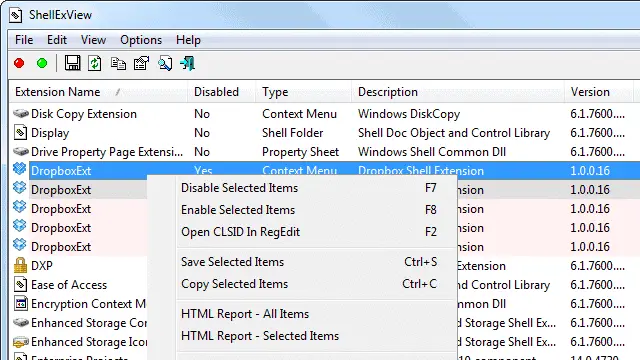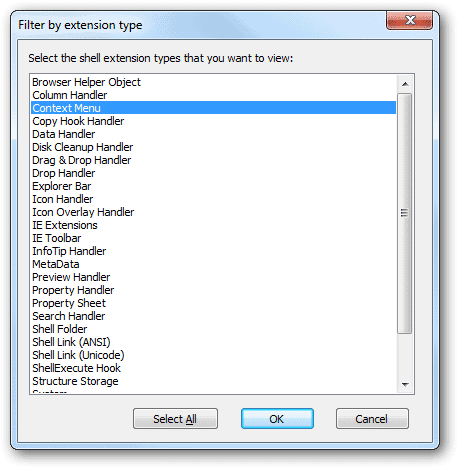
Installing programs often adds an entry to the right-click menu for easy access. You can remove empty subfolders, send items to your Dropbox, or open music files with VLC player, for example. Having too many of these really clutters the menu making it difficult to select what you need. Follow our guide below to use ShellExView for disabling unnecessary items. The program is portable and can be run from any location without installation.
How to use ShellExView
Notice all the entries in the right-click context menu when viewing it from a folder.

To being removing some entries we don’t use, download and open “ShellExView.”

Notice the icon and name for Malwarebytes from the above menu: “Scan with Malwarebytes Anti-Malware.” We can look at the “Extension Name” and “Description” columns in ShellExView to identify where this entry is found. Either click on it and select the “F7” key or right-click and choose “Disable Selected Items” to remove it from the context menu.

A confirmation prompt will ensure you want to disable the selected item.

The name will now be disabled, identified by a “Yes” under the “Disabled” column.

Although we’ve just removed it, if you check from the menu it will still be present. The change will only take effect when Windows Explorer is restarted. Reboot or choose “Ctrl+E” to restart Explorer.

After a few changes the menu is already noticeable cleaner. Disable any item on the list for the same result.

Every entry for the right-click context men is shown in the “Type” column as “Context Menu.” To view only these results, choose “Options > Filter By Extension Type.”

Select the types to filter and press “OK” to confirm the filter change.

Now only the specific selections for “Type” will display in ShellExView, making it a breeze for disabling items.

If when using the context menu any item is not present when you know it should be, return to ShellExView and review the items that are disabled by choosing the “Disable” column name to sort the results that are disabled to be on the top. Review these to ensure one wasn’t accidentally disabled.

Generate a report to list all the items ShellExView has found, with all the columns and entry names exactly as they appear in the application. Choose the “View” menu and then either of the “HTML Report” options to export a file to the same directory the ShellExView executable file is located.

Take note that the “HTML Report – All Items” option exports the results that are currently being filtered. For example, exporting while only showing the “Context Menu” types will export only those entries. Modify the filter to show all items before exporting to result in every entry ShellExView contains.
I was unaware my context menu was so full. I’ve installed many programs over the years so it makes sense but after going through them I’ve realized most are rarely or no longer used. Disabling is easy and restarting Windows Explorer through the menu couldn’t be more handy. Take a look around and see if there’s anything you’re able to remove.







